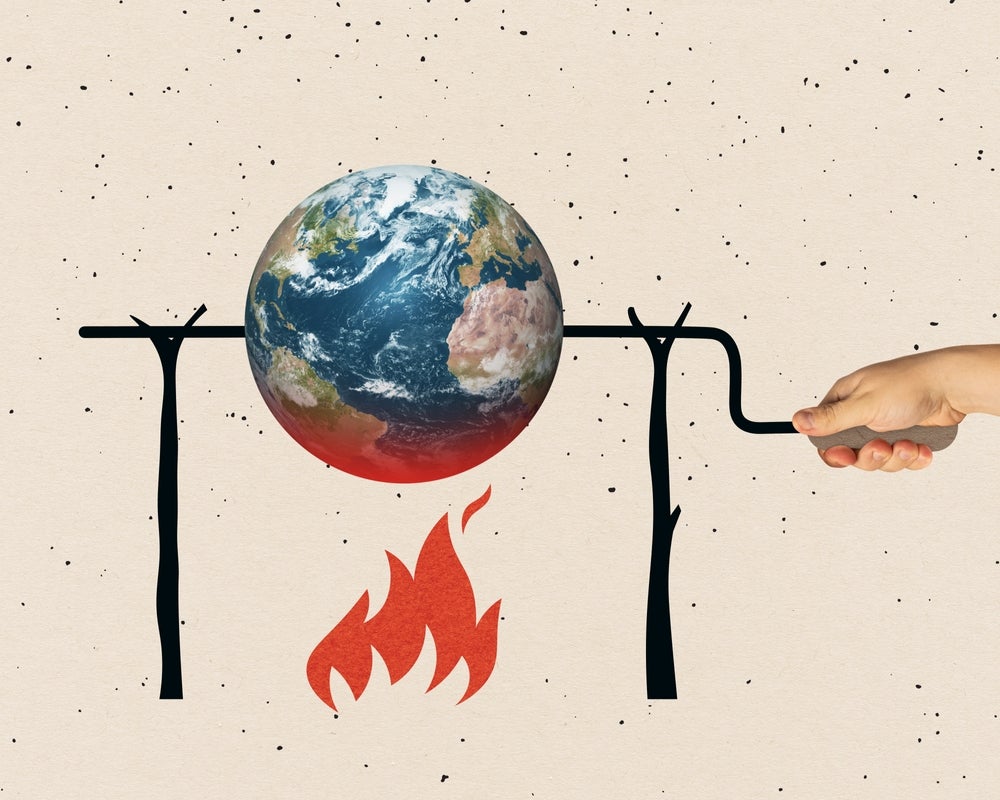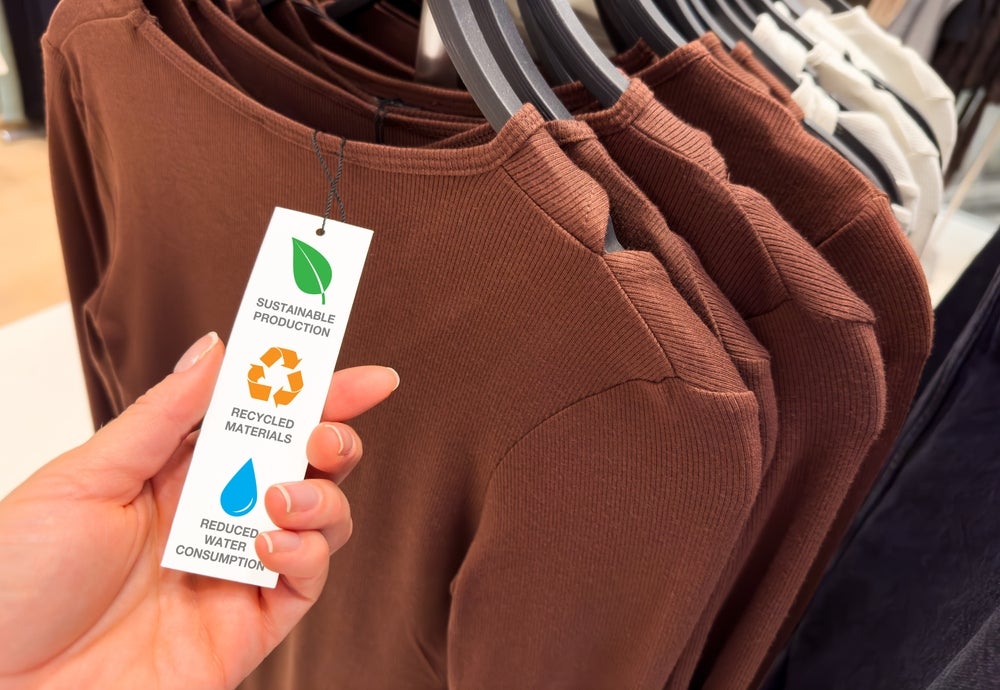
Textile Exchange and the Fashion Pact’s The Biodiversity Landscape Analysis for the Fashion, Apparel, Textile, and Footwear Industry report aims to spur companies forward with relevant methods and actions by consolidating and condensing the wealth of tools, methods, frameworks and standards available.
The bodies argue that fashion, textile, and apparel companies are “intrinsically responsible for protecting biodiversity” which is currently in crisis as a result of human activity.
In 2023, biodiversity loss was recognised as the fourth-biggest long-term global risk by the World Economic Forum.
The report, which was published in partnership with Conservation International and supported by Biodiversify, notes the fashion industry is hugely reliant on biodiversity and in 2022, a third of fibres and raw materials used by the textile industry were sourced from agriculture and forests.
Biodiversify director Dr Michael Burgass says: “This report represents not just an analysis of the problem but a blueprint for change. The fashion industry has woken up to the urgent need to reduce its environmental footprint, and this report presents a clear set of recommendations to help companies cut through the complexity and take action. Working with leading brands such as Kering, our recommendations are already making a difference in parts of the market, but we need the whole fashion industry to take the issue seriously and start making changes if nature is to be protected.”
While most of the textile industry’s material impacts and pressures on biodiversity relate to tier 4 — the raw material production and primary processing stage of the value chain — the report also points out the impacts on biodiversity caused by onward supply chain and life cycle stages. Key biodiversity impacts from material preparation, processing, and product manufacturing (tiers 3-1) relate to pollution from processes such as textile dyeing and treatment, or leather tanning, as well as energy use throughout manufacturing. The consumer-use phase of a textile also has impacts on biodiversity, through microfibre shedding, waterway pollution, and water and energy use from laundry.
How well do you really know your competitors?
Access the most comprehensive Company Profiles on the market, powered by GlobalData. Save hours of research. Gain competitive edge.

Thank you!
Your download email will arrive shortly
Not ready to buy yet? Download a free sample
We are confident about the unique quality of our Company Profiles. However, we want you to make the most beneficial decision for your business, so we offer a free sample that you can download by submitting the below form
By GlobalData“While the industry’s sustainability efforts have mainly been focused on climate action, organisations are increasingly recognising that climate and nature are two sides of the same coin,” argues the report.
“Since so many of the materials used by the fashion, textile, and apparel industry come from the land, companies have a vital opportunity to not only reduce harm and mitigate risk, but to actively protect, restore, and regenerate natural ecosystems.”
The report aims to prevent research duplication and fact-finding efforts and meaningfully address the issue of biodiversity. It also suggests actions fashion players can take to tackle the issue of biodiversity.
Key takeaways from the Textile Exchange biodiversity report
- Fashion depends on nature. While sourcing decisions directly impact biodiversity, companies also have an opportunity to protect, restore, and regenerate it. Doing so is vital to securing a more resilient future— not just for the sake of the industry and the fibres and raw materials it sources, but for earth’s ecosystems too.
- Targets can help guide the direction of travel. The Biodiversity Landscape Analysis is intended to complement the initial and forthcoming technical guidance on setting and reporting on biodiversity targets and strategies, currently under development by the Science Based Targets Network (SBTN) and the Taskforce on Nature-Related Financial Disclosures (TNFD).
- Diversity in perspectives and on-the-ground input is key. Drawing on interviews with a range of industry players, including farmers, suppliers, supplier groups, brands, certification organisations, consultants, and more, the report helps companies understand core definitions and concepts, as well as how to apply them to achieve positive biodiversity outcomes.
- There is no single solution, but there are some common next steps to take. Going forward, Textile Exchange, The Fashion Pact, and Conservation International call on companies to take a science-based approach to inform decisions; recognise the need to act on a landscape level – considering the areas in need of protection, restoration, and regeneration; accept that there is no one-size-fits-all solution for biodiversity; and take a continuous improvement approach, building strategic collaborations at all levels to enable impact at scale.
Recommendations for the textile industry to improve biodiversity
Avoid: One approach is to prevent negative impacts from happening in the first place, therefore eliminating the impact entirely. Avoidance applies to new or potential impacts and can involve categorically excluding particular materials, geographic areas, or ecosystems, or excluding specific impacts by avoiding specific technologies, land management practices or processes. For the textile industry, actions may include avoiding sourcing and/or using the following:
- Fibres and materials from farms associated with deforestation and conversion
- Animal fibres and materials produced using intensive farming or herding practices and inputs that degrade soils and landscapes;
- Fibres and materials from farms that use lethal wildlife management practices
- Cotton cultivated using intensive tilling/ploughing and high levels of synthetic inputs, such as broad-spectrum insecticides and nitrogen-based artificial fertilisers
- Fibres and materials with opaque origins that do not allow for due diligence.
Reduce: This action applies to minimising — but not necessarily eliminating— existing or known negative impacts. Good practice involves reducing impact to ‘As Low as Reasonably Practicable’ (ALARP), recognising that there may be trade-offs between the costs and benefits. Examples of reduction actions include:
- Reducing negative impacts and unsustainable dependencies on land, ecosystems, and natural resources by adopting business models that reduce consumption and/or displace a share of virgin materials sourcing with recycled materials
- Sourcing fibres and materials from farms certified by standards with biodiversity-beneficial criteria and land management practices
- Working with suppliers to implement practice changes, such as reducing the number of detrimental inputs or reducing negative impacts on biodiversity, ecosystem function, and habitat connectivity through best-practice land management.
Restore: Restorative actions involve bringing a degraded natural system (like a watershed or grassland) back to a near-original natural permanent condition, or improving its state of integrity. This can include initiating or accelerating recovery, with a focus on permanent changes in state. It is critical to ensure that restoration does not become the sole focus or justify degrading land in the first place. Restoration is often a long-term and resource-heavy activity that very rarely replenishes the value of original ecosystems (and the biodiversity they support) to the same degree. Restorative actions may include:
- Supporting individual species’ recovery plans
- Rehabilitating degraded lands or ecosystems
- Investing in programs or projects with criteria for (or a focus on) restoring degraded ecosystems on both productive and, where relevant, surrounding “non-productive” (natural) areas
- Working with local and wider relevant stakeholders to approach activities from a regional or landscape-based perspective.
Regenerate: Regenerative actions are designed to improve the integrity of an ecosystem through the implementation of land management practices that support ecosystem function and the provision of ecosystem services. They are implemented on productive landscapes, with the aim of sustaining or improving biophysical composition and/or ecological function. Examples of these actions include:
- Adopting standards, initiatives, and other programs or projects with criteria aligned with the principles of regenerative agriculture
- Going beyond certifications to support suppliers’ transition to regenerative agriculture practices by investing in technical assistance and infrastructure upgrades
- Working with local and other stakeholders to approach projects from a regional or landscape-based perspective.
Transform: To ensure system-level change, companies should consider transformative measures within their own organisations, such as shifting business strategies and models within and beyond their own supply chains and leveraging their control and influence in the sector where possible. Example actions include:
- Accelerating whole-industry progress by joining other companies that are making public commitments, investing, and taking action
- Working with a range of partners within specific landscapes (landscape initiatives).
The report says that ultimately it is key that organisations take a holistic approach both in terms of the type of action (be it biodiversity loss and reduction measures, or restoration and regeneration efforts) as well as the approach, considering both individual and collective action across the supply chain.







